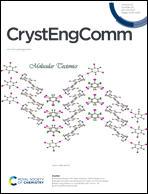A study of the effects of NH4+ on the fast precipitation of vaterite CaCO3 formed from steamed ammonia liquid waste and K2CO3/Na2CO3
Abstract
Vaterite-phase calcium carbonate (CaCO3) has many unique properties, such as high solubility, a spherical shape, a large surface area, and porosity, giving it more industrial applications than calcite and aragonite-type polymorphs. However, it is difficult to achieve its large-scale industrial production owing to its poor thermodynamic stability. In the present study, steamed ammonia liquid waste (CaCl2) was utilized to fabricate vaterite CaCO3 using a fast fabrication technique. The effects of the NH4+ concentration on the CaCO3 particle size, crystal structure, morphology, and chemical purity were investigated. The results show that the CaCO3 morphology, size, and crystal phase were influenced significantly by the NH4+ concentration. NH4+ had more influence on the crystallization process of CaCO3 when using Na2CO3 as a carbon source than when using K2CO3 as a carbon source. An examination of the mechanism showed that the NH4+ ions could be bonded to the original vaterite nanoparticle surface. Hence, the crystal growth polymorph could be controlled and vaterite phase transformation could be prevented.

- This article is part of the themed collection: Crystal Engineering Techniques


 Please wait while we load your content...
Please wait while we load your content...